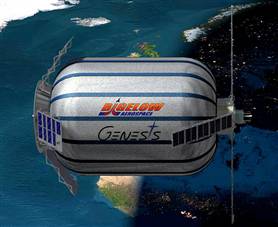 Canadian mission in Afghanistan extended 2009
Canadian mission in Afghanistan extended 2009
Just when you thought Canadian troops were heading home, the Afghanistan mission gets extended by two more years from 2007 to 2009. And now, with Canada possibly heading up the Afghan NATO mission in 2008, another 100 troops may be deployed to help rebuild the stricken country.
The motion to extend Operation: ARCHER, as it was named, was passed in a political showdown recently with a 149 to 145 vote. New Democratic Party leader Jack Layton spoke out against this decision when the vote was made, questioning the role Canada is playing in the war against terrorism as whole.
“If we are to ask this country to continue to fight a war, then we owe it to every single citizen of Canada to fully understand what we are committing to,” he said. “Our troops deserve to know what we are asking of them, families deserve to know what their sons and daughters will be called upon to sacrifice.”
According to Layton, the mission should have been rethought before it was extended, especially since an exit plan has not been mapped out yet.
Currently, Operation: ARCHER has deployed 2,300 Canadian troops to Afghanistan, about 2,200 of them remaining in Kandahar province where the Taliban has put up their heaviest armed resistance.
The Canadian Forces are currently dispersed amongst 15 other operations worldwide, the next biggest groups of personnel in Germany, Sudan and Sinai. Needless to say, Operation: ARCHER is the largest.
When asked about the extension of the mission, Karen Johnstone, a media spokesperson for the Canadian Forces in Ottawa, said she could not provide comment.
“We don’t speak about the policy of the mission,” she said simply. “We just … do.”
Harper’s government has continually funded the mission, with a recent contribution being $15-million for developmental aid that was also announced in late June. The Conservative government’s military commitment will top $15-billion, including purchasing new planes, medium- to heavy-lift helicopters, naval supply ships, and hi-tech logistics trucks.
The $15-million is to be used to root out Taliban insurgents and is not (claimed) to divert attention away from the military operations. However, Harper did hint at the possibility of remaining in Afghanistan past 2009 if needed.
This begs the question of whether Canadian Forces would be able to sustain the extension, given its small stature.
David Mendeloff, an assistant professor of international affairs at Carleton University and an expert in international security, said the military will be able to last for now, but not long term.
“Yes [the military is sustainable], assuming there are no other contingencies that the Canadian Forces are required to respond to like Darfur and other places of discussion,” he said. “Personally my own view is you certainly can’t sustain anything long term outside of Afghanistan at this point and time. It’s simply impossible to do that.”
Additionally, Mendeloff said public support will be harder to gain as time goes on.
“The longer we’re there and the greater harm it brings to Canadian Forces, the greater the dissatisfaction it’ll likely to be,” he said.
NATO Secretary General, Jaap de Hoop Scheffer, said in a speech during his visit to Canada that the organization will ensure the mission does not exceed past 2009, but predicts that it is far from being over.
“We bring a help to the Afghan Government by ensuring the essential safety, the rebuilding and the development of the country,” he said during the French portion of his speech. “… But illusion should not be made: our engagement will be long.”
There is no denying the unexpected support from Liberal opposition leaders across the nation. Ujjal Dosanjh, Liberal defence critic based in Vancouver South, spoke in the House of Commons in April regarding the Afghanistan operations.
“Canadians have looked to us, their elected representatives, for reassurance that the mission is worth the loss,” he said. “I am here tonight, on behalf of the Official Opposition, to offer Canadians an emphatic ‘Yes.’”
As of April 2006, seventeen troops have died in Afghanistan the most recent being Captain Nichola Goddard, the first female soldier to be killed in combat. Her death was announced on the same day the vote was made to extend the mission.
The mission is part of the United States-led campaign, Operation: ENDURING FREEDOM which comprises of two components, according to the Canadian Forces website: to train the Afghan National Army in Kabul and to deploy the Provincial Reconstruction Team (PRT), now active until 2009.
NATO, through the International Security Assistance Force (ISAF), will take over the mission in southern Afghanistan this August.
The organization is currently preparing for the international summit this year, to take place in Riga, Latvia where allied missions will be discussed.
Photograph: Canadian Department of National Defence
Source: Scene and Heard.ca (www.sceneandheard.ca), Canada Day issue
 U.S. researchers have discovered a shared gene between sharks and humans that could explain how both arms and fins evolved.
U.S. researchers have discovered a shared gene between sharks and humans that could explain how both arms and fins evolved.







































